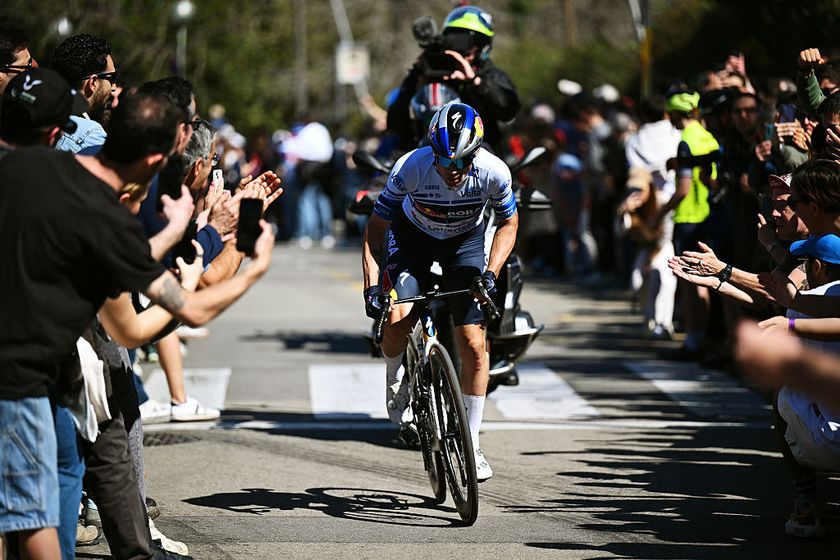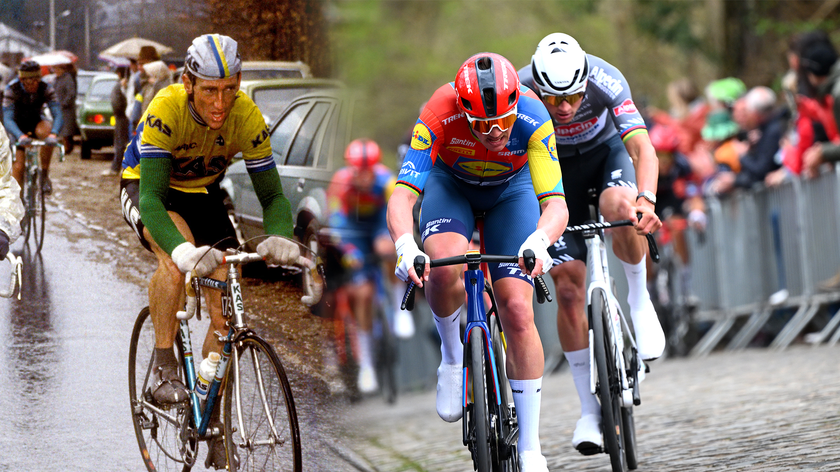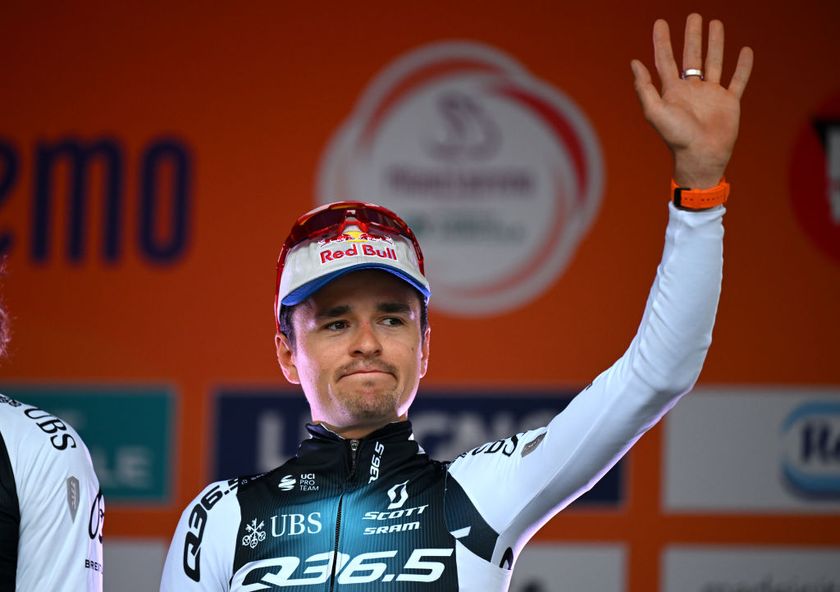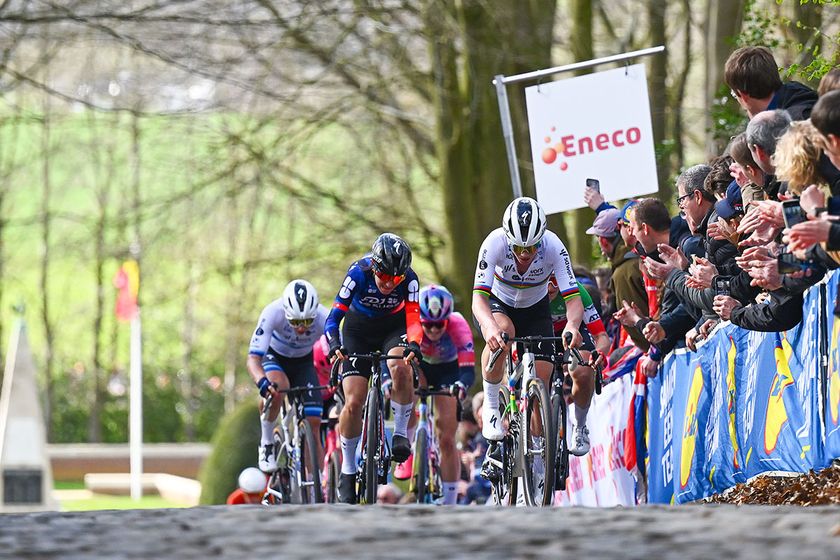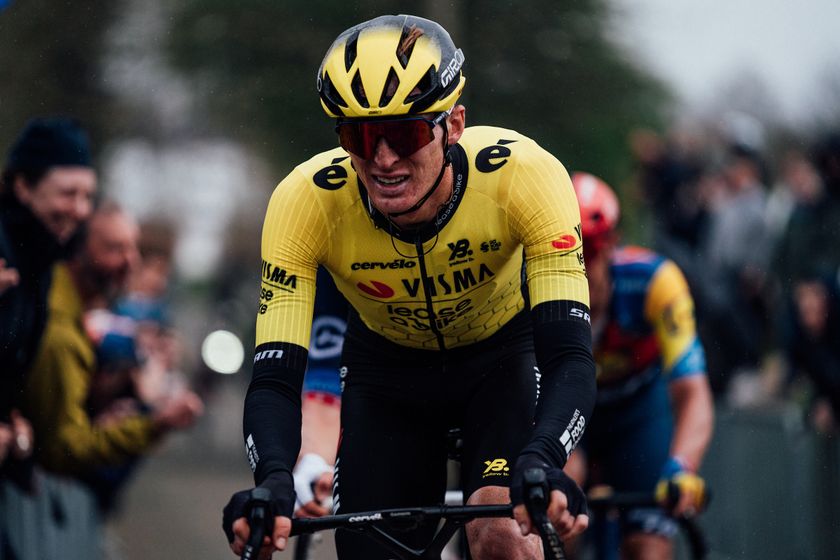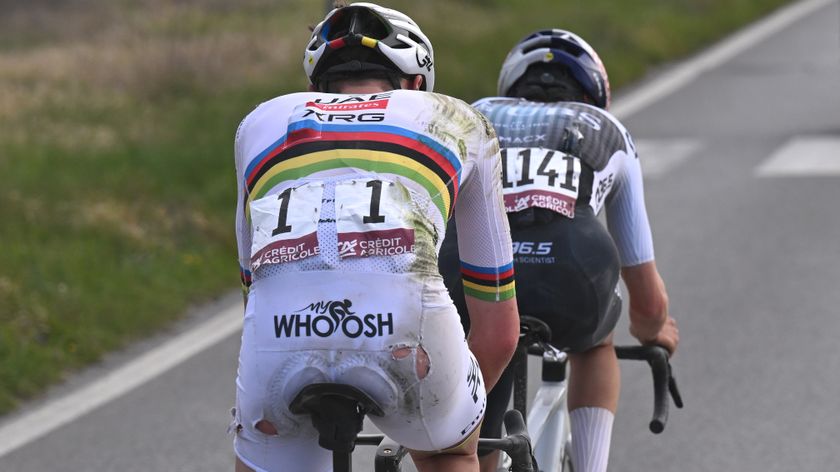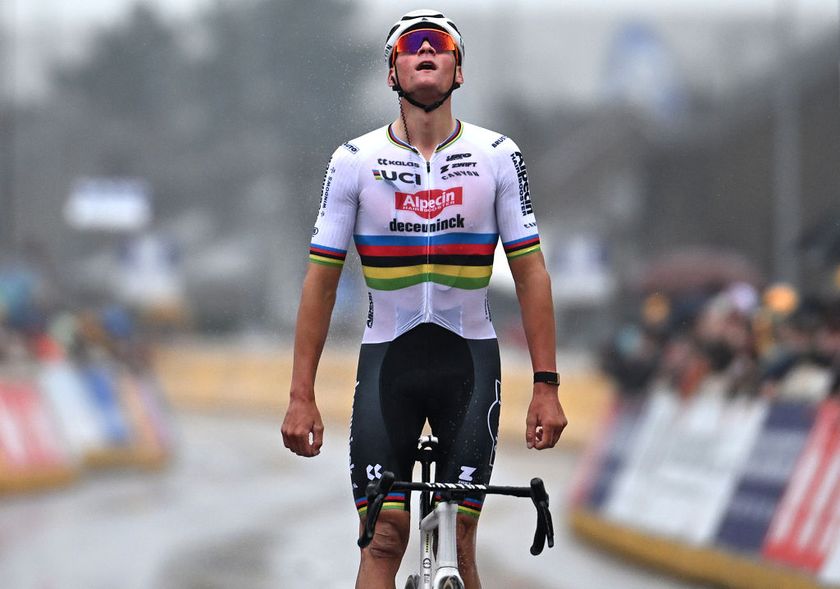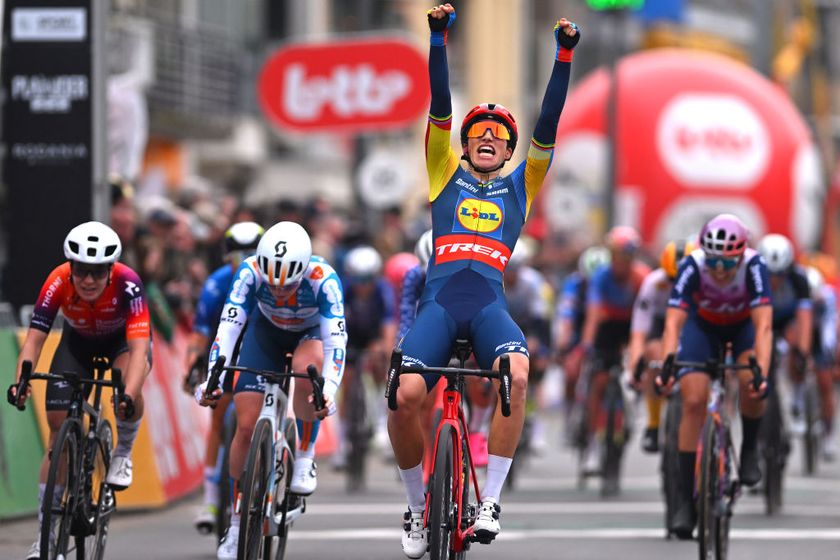Cyclingnews Fitness Q&A - December 16, 2011
Your fitness questions answered
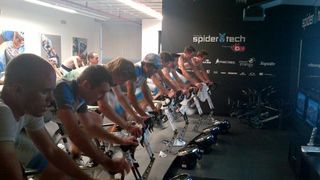
Topics: A reader posits the question – Why spend so much on a bike and not on a fit?, Off-season performance drop, Limiting high intensity training, Winter base training, Strength training for a club cyclist, Lactic threshold heart rate (LTHR), Leg pain on road bike but not on mountain bike, Cycling and male infertility
Got a question for the fitness panel? Send it to fitness@cyclingnews.com. Try and include as much relevant information as you can think of. Remember, the more details you can provide the better the panel can tailor their response to your question.
Emails may be edited for length or clarity, but we try to publish both questions and answers in their entirety.
To find advice that relates to you more easily:
A reader posits the question – Why spend so much on a bike and not on a fit?
Limiting high intensity training
Get The Leadout Newsletter
The latest race content, interviews, features, reviews and expert buying guides, direct to your inbox!
Strength training for a club cyclist
Lactic threshold heart rate (LTHR)
Leg pain on road bike but not on mountain bike
A reader posits the question – Why spend so much on a bike and not on a fit?
Hi Scott,
I for one had a bike fitting done several years ago and then again when I got my S5 in September and cannot imagine buying a bike now and not getting one. In the first fit, shims were added to my shoes to compensate for a shorter leg, pedal spindle length was adjusted along with stem height and seat position, etc and while it took me a few rides to get used to the new position – once I did I noticed an immediate benefit. When I got my S5 in September, I’d been off the bike for two months because of an inattentive driver and this time I had another fit done as the shop had lost my data when they switched computer systems and also had a saddle fit too. The saddle fit was perhaps the best thing I ever did! Plus in the intervening years the fit process at this shop got more advanced using two cameras and Specialized Body Fit software.
New Hampshire
Scott Saifer says:
Hi Chris,
Thanks for the note. I bet Steve has more to say about this than I do. My thought is that the reason people don't routinely get professional fits are several: 1) They think they can do it themselves. They know how to loosen and tighten the bolts and know they sometimes feel the seat is too high or too low, so they figure they can make the necessary adjustments. 2) Ignorance. They don't know how much difference getting things really dialed in well can make in their enjoyment or competitive success in riding. 3) Personal or vicarious experience with lousy "professional" fits. A really good fit has to involve a lot of observation and interaction between the rider and the fitter.
A good fit has to include asking and answering the question, "How does that feel" over and over, or very close observation of the smoothness of movement or the absence of that smoothness. Over the years there have been many fitting "systems" based on formulae and percentages of this and that. The early ones had tables, charts, worksheets and pocket calculators. The latest generation of these "systems" use computers and cameras and motion-capture software, but all of them can give a lousy fit if there is anything special about the rider, such as a leg length discrepancy, a limitation stemming from a former injury, or just unusual proportions. Paying someone to put you in an uncomfortable position could turn you off professional fits for a long time. Hearing about a friend’s poor experience might do the same.
In defense (and mockery) of do-it-yourself fitting, when I was getting started as a racer I got my position dialed in to a point where I was comfortable, competitively successful and injury free. I did that by reading the fit chapters in half a dozen books by former racers, plus articles in various cycling magazines as they came out. I'm not sure, but I think it took about three years of trial and error. Then I went to a professional fitter who had a great eye for movement and fit. He put me on an adjustable sizing bike, and within about 15 minutes, never having seen my other bike, got me within a couple of millimeters of the position I had developed over all those years.
I'm glad you've had a good experience with professional fitting. I like to tell people that it's the final few hundred bucks you spend on a fitting and possibly trading out a few fit related parts that makes a $6000 bike feel like a $6000 bike. It will also make a $2000 bike feel like a $6000 bike.
Steve Hogg adds:
G'day Chris,
Scott's pretty much said it all and I don't have much to add. I'm booked out for some time ahead at all times of the year but a straw poll indicates that a minority of those people come without any real problems they are aware of (usually on a word of mouth recommendation).
In my experience the vast majority come because they have a problem that they, and sometimes others, cannot solve. So I suppose if a rider hurts enough…
Off-season performance drop
Hi
I have a question on performance that I can't fathom, I have been riding on and off for 20 years but only took to the bike seriously again about 3 years ago,
In season (March onwards) I tend to average around 30 km/h for training rides that vary from 60 to 140km, peaking with a season best this summer of 32km/h on a hilly 140km course. I was training about 8 hours a week with one or two sets of hard intervals a week in season.
I have stopped intervals over the off-season for October and November but I still ride about 5 hours at lower intensity (with the occasional jump). I have been doing some "core" gym work once a week although I have avoided doing any “high intensity” work.
My average speeds for the same rides have plummeted to 26kph. I am trying not to panic, trying to focus on base training in the belief that once I start intervals and focusing on training above level 1/2 in the new year that all will be well. Is this a normal physiological response in the off season?
Thanks,
Guy
Scott Saifer says:
Hi Guy,
Yup, it's normal to see big drop in ride-average speeds when you take a rest month and start base, especially if you are comparing rides where you pushed the pace in season with rides where you are carefully controlling the pace in base season. By the end of base development though, your ride-average speeds on a controlled-pace ride should be similar to those of a hard ride in season, especially for the longest rides.
Limiting high intensity training
Should high intensity training sessions be limited? For example: I recently trained at 450 watts for 16 minutes. My previous best was 429 watts. I was on a good day and went 'all out.' It took an entire week before I could ride at my normal levels. Should I limit the number of time trials and personal best efforts? In other words, was this work out really helpful or would I have been wiser to limit my workout so that the rest of the week could include high training levels?
Tim S.
Scott Saifer says:
Hi Tim,
Setting new personal records for speed and wattage is fun, yes? It's so fun it can be somewhat addictive. You set a new record and you want to go set more. The problem, as you've noticed, is that a really maximal effort of the sort that gets you a new record for a high-intensity effort is also a really tiring effort and compromises the rest of your training.
So, yes, you should limit those super high intensity efforts and think about the time of year when it is most appropriate to do them. You haven't said what you are training for or when your season starts, but it's generally a good idea to reserve those supreme efforts for the period a few weeks before your important races of events of the season, and then do no more than one or two such sessions per week. If they are so draining that you can't do other training for a week after, doing one per week is probably too much even. Develop a periodized training plan for yourself, and then limit testing and record setting such that you can indeed maintain your training, perhaps with one day per month dedicated to testing and record setting, or not even that if you can ween yourself off the rush.
Winter base training
Hi Guys,
My end of season results showed a loss in weight of over 5 kilos but 2 kilos of this was muscle. My watts per kilo had stayed the same due to the weight loss but max power was down. This was put down to not eating enough on the bike which I would agree with and probably not eating as much off the bike as I was consciously trying to lose weight.
I am now in the position to begin winter base training. My problem is this. I live in a hilly part of the UK, I can't go out of the door without going up, or down a 9 per cent climb. Due to the terrain I find staying in zone 2 (which for me is 138-148 bpm) very difficult. Some of the climbs have me up close to lactic threshold (which for me is 168 bpm), even though I feel pretty easy at this. My average heart rate on rides is still within zone 2 but I am aware that sections of the ride are above where I should be.
So, should I do the majority of my base training on the turbo trainer? Boring as it is it's pretty easy to put a film on and sit there for a couple of hours within the target zone. If I did 6-8 hours at this and then an unstructured road/MTB 3 hour ride per week would that be enough base training?
My goals for next year are UK based sportives in May and then the Marmotte sportive in July.
Scott Saifer says:
Hi Alex,
My home turf and the area where most of my clients live is similarly hilly. We have a few flat roads we can get to, so maybe we're a little better off than you. Here's the deal though: I've had several clients who trained on hills every day get much stronger simply by maintaining the same training volume, but going to those few flat places or riding trainer for most of their rides, reserving the hills for one or two rides per week.
If you want to maximize your winter gains, yes, do stay in zone 2 for the majority of your rides for a few months, not on the average but second by second. That's not enough though. You'll also get stronger if you can make a steady effort for many minutes at a time on those rides than if you are constantly switching between climbing and coasting. That doesn't mean you have to find roads with zero per cent gradient. You just need to find roads where you can make a continuous effort at non-ridiculous cadences. If there is a flatter bit of road a few minutes long nearby, you could ride laps on it. Velodromes are good too.
If you really don't have either of those, you'll have to ponder your priorities. If you want to do well in your races next season more than you detest mind-numbing hours on the indoor trainer, get on that trainer. Six to eight hours of trainer plus one 3-hour outdoor ride per week should indeed be enough base training for the next few months. At some point you'd of course want to start doing longer rides once per week in preparation for your longer goal events.
Strength training for a club cyclist
Hi guys,
For a club cyclist who trains 12-18 hrs a week how helpful would it be to add periodized strength training to my regime? I have seen people that swear by it and the power gains they say they have experienced by doing it. And then on the other side of the coin, people that say it’s a waste of time and not to bother.
The only reason I am looking to do it is to gain leg strength that hopefully translates to watts on the bike.
Thanks,
Sam
Scott Saifer says:
Hi Sam,
Like all forms of training, strength training is only beneficial if it makes you a more effective cyclist. It must correct a limiter to make you a more effective cyclist. Strength training can do that in several ways depending on your current abilities and weaknesses. The research says that strength training drives the conversion of type IIx (untrained fast twitch muscle) to type IIa (aerobically trained fast twitch muscle). Type IIa muscle is your "power" muscle, used for time trialing, sprint acceleration and sustained efforts near VO2-max power of a few minutes duration. The same conversion can be driven by high-force riding, at least in the pedaling muscles. For riders who live in cold- or snowy-winter regions, training in the gym can be a much more pleasant way to get those type IIa fibers ready for the season than outdoor riding.
There are muscles that are used only under special circumstances in cycling, and which get tired or sore quickly when they are used, particularly early in the season. For instance, the pelvic stabilizer muscles of the low back are recruited much more during hard, out-of-saddle pedaling than during seated pedaling. Some racers will find that their backs get sore and tight after their first few hilly road races of the season because those muscles are not as strong as they need to be to sustain the loads of standing during such a race. Of course one could do uphill sprints through the winter and not have this problem, but a few months in the gym doing back-extensions on the "roman chair" or dead-lifts will also condition the back against that injury.
Up until about a decade ago, there was a common overgeneralization that caused a great deal of confusion about the value of strength training. Physiologists knew that power at lactate threshold and VO2-max were associated with competitive success in bike racing, but they didn't know what else they could measure that would turn out to be important. If they wanted to know if a training modality or nutritional supplement would be effective, they checked to see if it would have an effect on VO2-max or power at lactate threshold. Turns out weight lifting improves both of those, but only in untrained or poorly trained subjects, not in highly trained bike racers. Unfortunately, "doesn't affect LT power or VO2-max" was over generalized to "doesn't help bike racers". Some silly coaches even went so far as to say that since strength training caused hypertrophy and weight gain, it has to be bad for bike racers.
More recent research has improved our understanding of the effect of strength training. First, it has been show that riders who simultaneously (in the same week, not the same minute) train endurance and strength don't hypertrophy. They gain strength without gaining weight. Second, it turns out that while strength training doesn't boost VO2-max or LT power, it does boost endurance at VO2-max level power. In one study, the time that athletes could maintain VO2-max power increased from 3 minutes to 6 minutes after strength training. That the difference between setting up for the sprint in the second to last lap of the sprint and then not being able to hold position, vs setting up in the second to last lap and holding position through the last lap to be able to sprint.
Bottom line: Strength training done appropriately can help riders becomes more competitive. I recommend it for riders who will have time to ride at least eight hours most weeks in combination with their lifting. Extremely time-pressed riders who won't be able to ride eight hours and lift, I'd take on a case by case basis, looking at their strengths and weaknesses in more detail and only assigning strength training if strength seems to be a major limiter.
Lactic threshold heart rate (LTHR)
Thanks in advance guys, I end up getting so much good information from the responses. I had a question regarding my lactate threshold heart rate. I've always done the field test with a 30 minute TT where you hit the lap button 10 minutes in and get your average HR for the last 20 minutes on the effort being an approximation of your LTHR.
Scott Saifer says:
Hi Joseph,
That field test is a terrible way to determine lactate threshold heart rate. I have one client who could ride almost an hour 40 beats above his lactate threshold as determined by measuring blood lactate. Riders who routinely train to hard develop the ability to sustain heart rates (but not powers) above lactate threshold. The test also obviously fails if you do it on trails or on the road, but which?
Set up your zones based on proper physiological test such as a ramp-protocol test with gas exchange or lactate measurement or a simple chat-no-chat threshold test done on a trainer or on a road with constant grade.
Leg pain on road bike but not on mountain bike
Hello,
I ride with a cycling club and on the road we do one or two rides per week of 80-100 kms at 30 km/h average. I was one of the best riders in the group but since half a year or so, I have quite a lot of muscle pain in my thighs. The pain starts almost from the start of the ride, in any small hill. Then it sort of subdues but towards the end of the ride it becomes very hard to ride at the same speed as the rest of the group.
My heart rate doesn’t increase much, it’s just that the legs won’t turn anymore and it’s impossible to ride up on the saddle.
In the winter we have done some mountain biking rides of around 50 kms. And there, I don’t have the problem. In fact I can ride one Saturday on the road with pain and getting dropped and the day after on Sunday mountain biking at the top of the same group. Most of the group actually finds the mountain bike ride harder and they cannot believe I have pain on the road.
As background, I have always been a roadie. I came bike to cycling 2 years ago after having stopped for 10 years and I am 36 years old.
The two reasons I can think of is: too hard gearing on road bike (I run 53/39 at front), too high saddle position.
Thanks,
Pello Morras
Steve Hogg says:
G'day Pello,
This is a simple problem, however the first thing you need to do is to identify exactly what is going on. The pain at the front of the thighs is likely hip flexor overload. Potential reasons in no particular order are:
1. Seat too far back combined with a low bar height.
2. Seat too far forward combined with a low bar height.
3. Bars far too low.
4. Seat too high (as you say) but this would only be the cause if your hip flexors are world class inflexible.
The reason that you don't experience this problem on your mountain bike is because of the more upright torso angle that is normally the case when riding a mountain bike.
I would suggest going through the possible reasons one at a time. For more info on each, have a look at:
Once you've worked your way through those, let me know how you are going.
Cycling and male infertility
Although not strictly related to fitness issues - my wife and I have been going through IVF treatment over the past 12 months in the hope of her getting pregnant.
I am an avid cyclist who competes at an amateur level - mostly criterium racing, I would estimate that I train upwards of 7 hours weekly on the bike, some weeks double this. Recent tests of my sperm count reveal a problem with my morphology although still within the range of the everyday male - are you aware of any research/studies which show that constant cycling (seated on a narrow seat causing heat to the that region of the body) may effect a male's sperm count.
Please say there are no ill effects of cycling so I can enlarge your reply and leave it around the house when I'm out on my beloved roadie.
Regards,
Chris
Scott Saifer says:
Hi Chris,
Plenty of very serious amateur and professional cyclists become fathers despite many, many hours of cycling, so we know for certain that cycling does not cause infertility in all cyclists. One study found that compared to sitting in a chair in the laboratory, riding a bike at low intensity in a laboratory actually decreases scrotal temperature. Unless you are wearing an awful lot of clothing while cycling, the breeze through that region should be keeping you testicles cooler even while pedaling is generating extra heat.
On the other hand, we know that a poorly positioned saddle can cause erectile dysfunction, numbness and a variety of other problems related to pressure on nerves or blood vessels. One study found that triathletes in particular had a 4.7 per cent rate of sperm morphology problems. Another found that the sperm of endurance trained runners were less effective in moving through cervical mucus than the sperm of weight lifters or sedentary controls. The two studies together suggest but do not prove that the running component of triathlon may be a problem.
Bottom line: we can't say that your cycling is not adversely affecting your fertility. If for some reason your body is not as good as others at keeping the testicles cool, your cycling could indeed be affecting the quality of your sperm. The bad news is that sperm production is a slow process: Heating your testicles today affects the sperm you produce for the next three months plus or minus. If you wanted to experiment with stopping riding to improve fertility, you'd have to do it for three months and then enough of your wife's cycles to get pregnant. My suggestion would be to be careful to keep cool in that region and keep riding, unless your marriage depends on you showing the right level of commitment to getting pregnant, in which case you have a tough decision to make.
The Cyclingnews Form & Fitness panel
Scott Saifer (www.wenzelcoaching.com) is head coach, CEO of Wenzel Coaching.com and has been coaching cyclists professionally for 18 years. He combines a master's degree in Exercise Physiology with experience in 20 years of touring and racing and over 300 road, track and MTB races to deliver training plans and advice that are both rigorously scientific and compatible with the real world of bike racing.
Scott has helped clients to turn pro as well as to win medals at US Masters National and World Championship events. He has worked with hundreds of beginning riders and racers and particularly enjoys working with the special or challenging rider. Scott is co-author of Bike Racing 101 with Kendra Wenzel and his monthly column appears in ROAD Magazine.
Steve Hogg has owned and operated Pedal Pushers since 1986, a cycle shop specialising in rider positioning and custom bicycles. In that time he has positioned riders from all cycling disciplines and of all levels of ability with every concievable cycling problem. Clients range from recreational riders and riders with disabilities to World and National champions. He can be reached at: www.stevehoggbikefitting.com
Kelby Bethards, MD received a Bachelor of Science in Electrical Engineering from Iowa State University (1994) before obtaining an M.D. from the University of Iowa College of Medicine in 2000. Has been a racing cyclist 'on and off' for 20 years, and when time allows, he races Cat 3 and 35+.
He is a team physician for two local Ft Collins, CO, teams, and currently works Family Practice in multiple settings: rural, urgent care, inpatient and the like.
Pam Hinton has a bachelor's degree in Molecular Biology and a doctoral degree in Nutritional Sciences, both from the University of Wisconsin-Madison.
She did postdoctoral training at Cornell University and is now an associate professor of Nutrition and Exercise Physiology at the University of Missouri-Columbia where she studies the effects of energy balance on bone health. She has published on the effects of cycling and multi-day stage racing on bone density and turnover.
Pam was an All-American in track while at the UW. She started cycling competitively in 2003 and is a three-time Missouri State Road Champion.
David Fleckenstein, MPT, OCS (www.physiopt.com) is a physical therapist practicing in Eagle, ID and the president of Physiotherapy, PA, an outpatient orthopedic clinic focusing in orthopedics, spine, and sportsmedicine care.
His clients have included World and US champions, Olympic athletes and numerous professional athletes. He received his Masters degree in Physical Therapy from Emory University and is currently completing his doctorate at Regis University.
He is a board certified orthopedic specialist focusing in manual medicine and specific retraining of spine and joint stabilisation musculature. He is a former Cat I road racer and Expert mountain biker.
Carrie Cheadle, MA (www.carriecheadle.com) is a Sports Psychology consultant who has dedicated her career to helping athletes of all ages and abilities perform to their potential. Carrie specialises in working with cyclists, in disciplines ranging from track racing to mountain biking. She holds a bachelors degree in Psychology from Sonoma State University as well as a masters degree in Sport Psychology from John F. Kennedy University.
Dave Palese (www.davepalese.com) is a USA Cycling licensed coach and masters' class road racer with 16 years' race experience. He coaches racers and riders of all abilities from his home in southern Maine, USA, where he lives with his wife Sheryl, daughter Molly, and two cats, Miranda and Mu-Mu.
Dario Fredrick (www.wholeathlete.com) is an exercise physiologist and head coach for Whole Athlete™. He is a former category 1 & semi-pro MTB racer. Dario holds a masters degree in exercise science and a bachelors in sport psychology.
